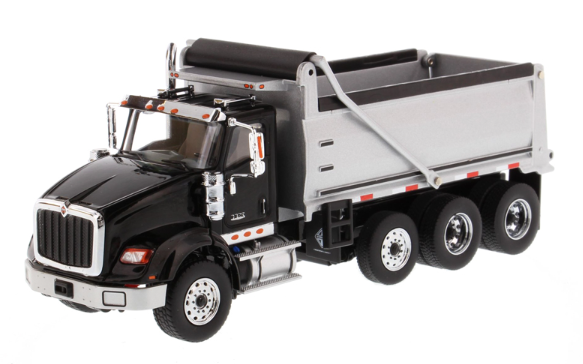In this article, we want to go over the definition of a die cast dump truck, and also the types and parts of dump trucks.

What Is Die Cast Dump Truck?
A die cast dump truck is a toy vehicle made from the same die casting process used to make the die cast cookware I described earlier. This process involves injecting molten metal into a mold under high pressure, creating a detailed and durable toy. A die cast dump truck is typically made from metal (usually zinc or aluminum) and includes movable parts such as the dump truck bed, wheels, and doors. Die cast dump truck toys are popular among children and collectors alike due to their realistic appearance and high level of detail. They are commonly used for imaginative play and can also be displayed as collectible items.
What Are the Different Types of Dump Trucks?
1. Standard dump truck: This is the most common type of dump truck and has a truck chassis with a dump body mounted on it. They come in various sizes, from small pickups to large commercial trucks.
2. Transfer dump truck: Also known as a “slinger,” this dump truck has a separate trailer that can be loaded separately from the main dump body. The transfer dump truck can discharge its contents in motion, making it a popular choice in construction and landscaping applications.
3. Side dump truck: As the name suggests, the side dump truck unloads its contents through the side of the dump body. This type of truck allows for precise and controlled unloading and is commonly used for road construction and other applications where space is limited.
4. Off-road dump truck: These are heavy-duty dump trucks designed for off-road use, typically in mining and construction applications. They have large wheels and tires, and their suspension system allows them to operate on rough terrain.
5. Semi-trailer dump truck: Also known as a “semi,” this type of dump truck has a tractor truck pulling a larger trailer with the dump body mounted on it. Semi-trailer dump trucks are commonly used for transporting large quantities of heavy materials, such as sand, gravel, and demolition debris.
6. Superdump truck: This is a standard dump truck with additional axles that allow it to carry more weight. A superdump truck can hold up to 25 tons of material, making it a popular choice among construction contractors who need to move large volumes of material quickly.
What Are the Parts of a Dump Truck?
1. The Cab: This is the driver’s compartment located at the front of the truck. It contains the steering wheel, pedals, and other controls required to operate the vehicle.
2. Dump Body: This is the container mounted on the chassis of the truck and is used to transport loose materials such as sand, gravel, and rocks. The dump body can be raised and lowered using hydraulic cylinders or pistons.
3. Hydraulic System: This system powers the lifting and lowering of the dump body. It consists of a hydraulic pump, cylinders or pistons, control valves, and hoses.
4. Tailgate: This is the rear end of the dump body that can be opened or closed for loading and unloading materials.
5. Engine: This is the power source of the dump truck, providing energy to operate the vehicle and the hydraulic system.
6. Transmission: This component is responsible for transferring power from the engine to the wheels. Dump trucks typically have higher gear ratios to handle heavy loads effectively.
7. Suspension System: This system includes springs, shock absorbers, and linkages that help the truck to absorb shock and maintain stability on rough terrain.
8. Wheels and Tires: The wheels and tires of a dump truck are designed to withstand the weight of the load and provide stability to the vehicle.
9. Brakes: Dump trucks have heavy-duty brakes to slow and stop the vehicle’s momentum, ensuring driver safety.
10. Mirrors and Lights: These components provide visibility to the driver and enable safe operation of the dump truck during the day and night.
Difference Between a Dumper and a Dump Truck?
The terms “dumper” and “dump truck” are sometimes used interchangeably, but they refer to different types of vehicles. A dumper is a vehicle that is designed to transport and unload bulk materials such as sand, gravel, and dirt. Dumpers are typically smaller and less heavy-duty than dump trucks and are often used in landscaping, mining, and construction applications. They typically have a skip or bin that can be tilted to unload the materials. A dump truck is a large heavy-duty vehicle used to transport and unload materials such as sand, gravel, and dirt. Dump trucks come in various sizes and capacities, from small pickups to large commercial trucks. They have a dump bed that can be raised by hydraulic cylinders or pistons, allowing the materials to be unloaded quickly and efficiently.

